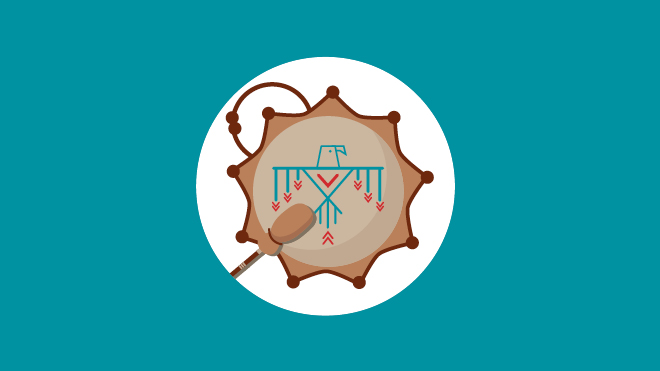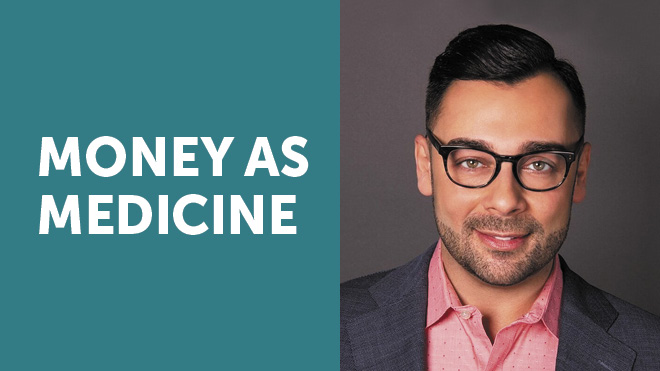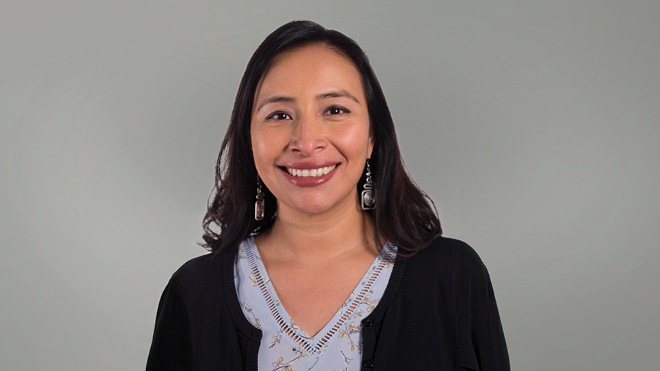
Financial Education That Fits Native Needs
A BECU mortgage advisor is working to give back to Native communities through culturally relevant financial education.
Looking back on her childhood, Bethany Hawkins feels lucky to have a strong sense of connection to her Native culture — but she didn't always feel that way.
Hawkins is a mortgage advisor who has been with BECU for 16 years. Her family is Lakota, from the Pine Ridge Reservation in South Dakota. She grew up among the Puyallup Tribe in Washington, attending Chief Leschi Schools.
When she saw classmates and their families struggling with addiction, health problems and their finances, she wanted to distance herself from them. At that time, she didn't understand the history of oppressive forces contributing to their circumstances.
"When I graduated high school, I was a little ashamed of my background," she said. "I ran away from it."
Hawkins grew to embrace her heritage as she learned more about her own culture and history. She wants to give back to her community by helping to develop financial education programs that are respectful of Native cultures and values and meet the needs of tribal youth.
She recognizes financial education alone can't solve problems caused by centuries of racist laws and policies. But it can help empower people to make choices that stretch their dollars for greater longer-term benefit and better financial outcomes.
Financial Education Isn't One-Size-Fits-All
Hawkins has been instrumental in BECU's efforts to develop and pilot a culturally relevant program that is applicable to experiences and circumstances of tribal youth. She worked in partnership with BECU's lead financial educator, Stacey Black, advising on ways to tailor existing financial education programs.
"In the past, we would teach one budgeting class. That's it. It was the same for everyone," Black said. "We've learned that it's better if we find out who we're teaching in the class. What are they budgeting for? What do they want and need to know?"
To gain greater cultural competence, Black and another BECU educator earned financial coaching certificates from Oweesta, a Native Community Development Financial Institution (CDFI), during one of their new financial education curriculum classes on Building Native Communities.
Black has also seen an increase in requests for instructors who match the demographic of the audience.
"I would love to continue efforts with BECU employees and community partners who have ties with Native cultures, so our students have an opportunity to learn from someone they can relate to."
Planning for 'Big Money'
BECU's development of an education program for tribal youth was prompted by a request from a local tribe that wants to help prepare youth to manage the large lump sum they will receive when they turn 18. The payouts are from tribal revenue that the tribe holds in trust for enrolled kids.
Hawkins is familiar with this scenario from her own classmates. She's watched as some tribes' per capita payments have grown as their casino revenue grows. It should be noted that the majority of tribes in the U.S. don't operate casinos, and of those that do, only a third earn enough gaming revenue to make per capita payments to tribal members, according to the nonprofit Partnership With Native Americans.
But for those young adults who do receive large payments, lacking money management skills and plans for their education and professional development, many of them burn through their money.
"If you grow up in a family that doesn't have a lot of money, and you suddenly get $20,000 or more when you turn 18, that seems like a lot," Hawkins said. "Some kids don't even think they need to finish school."
One of the key points Hawkins hopes to reinforce with Native kids is the difference between income and wealth, especially since U.S. laws and policies have made growing and retaining wealth challenging for many Indigenous people.
Hawkins helped one tribal high school graduate think through his plans for his lump sum and ongoing per capita payments, considering upcoming and long-term expenses.
"We talked about how he was making good money, but he didn't own any assets that would increase in value or ensure long-term financial stability," Hawkins said.
During another class, she and Black talked to students about budgeting for fixed and variable expenses, savings goals and ongoing sources of income to help students maximize their money.
Basics of Banking Through a Native American Lens
Native Americans represent the lowest rate of households that use banks or credit unions in the U.S., according to the National Indian Council on Aging.
Reasons include difficulty accessing physical banking and ATM locations, lack of internet access for online banking, distrust of the banking system and poor credit history.
Hawkins and Black have been mindful of these challenges throughout the curriculum development process. They can't assume students grew up with personal banking as a routine part of their money management toolkit.
"We need to cover basic banking needs all the way up to home loans and saving for retirement," Hawkins said. "I think working with a credit union might help with some of the trust issues because we work to serve our members, not shareholders."
Family and Community Obligations
Informed by her own experience, Hawkins emphasized the importance of considering how students not only want to spend their money, but how they might feel obligated to spend it.
"Students might have grandparents, aunts, uncles and cousins they feel responsible for," Hawkins said. "We might need to include expenses for supporting extended family when we're talking about budgeting."
Working in Partnership
As valuable as shared experience is, especially when teaching members of a historically oppressed group, Hawkins cautioned against overgeneralizing.
"I can teach from the perspective of what I know professionally and from my own community," she said, "but every tribe is a different culture and each one has different needs."
Hawkins believes teachers, school administrators, community members and students all have important perspectives. Their voices should be included in conversations about financial education. The goal isn't to tell youth how to spend their money, but to give them tools and resources that can help them make decisions that work best for them and create a financially healthy future.
If you would like to learn more about BECU's financial education programs for Native American youth, please email BECU Lead Financial Educator Stacey Black.
Resources
The above article is intended to provide generalized financial information designed to educate a broad segment of the public; it does not give personalized financial, tax, investment, legal, or other business and professional advice. Before taking any action, you should always seek the assistance of a professional who knows your particular situation when making financial, legal, tax, investment, or any other business and professional decisions that affect you and/or your business.


